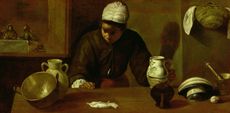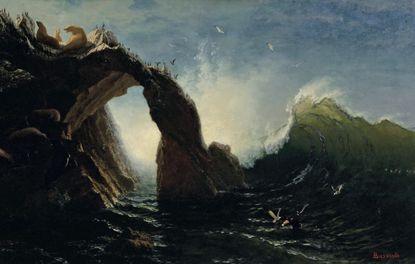Art and Antiques
-

Andy Murray: My favourite painting
Sir Andy Murray, the double Wimbledon champion, Olympic gold medallist and former world number one, chooses his favourite painting for Country Life.
By Charlotte Mullins Published
-

My favourite painting: Keith Halstead
Keith Halstead of the Royal Countryside Fund chooses a scenic image by Edward Seago.
By Charlotte Mullins Published
-

The most incredible drinks cabinet you'll ever see: 'Who wouldn't want to have a whisky out of a hippo?'
Not just a bronze sculpture by a modern French master, but a bronze sculpture which opens to reveal a whisky bar. Carla Passino found out more from the art dealer who fell so hopelessly in love with the piece that he was desperate to buy it himself.
By Carla Passino Published
-

My favourite painting: Melanie Vandenbrouck
Melanie Vandenbrouck, chief curator at Pallant House Gallery in Chichester, chooses a Jadé Fadojutimi image.
By Charlotte Mullins Published
-

The 102-year-old, the armed robbers and the 'blazing' Picasso which helped Sotheby's sell $1 billion of art in a month
November's major auctions witnessed some truly extraordinary sales — not least thanks to the sale of the collection of Emily Fisher Landau. Huon Mallalieu takes a look.
By Huon Mallalieu Published
-

My favourite painting: John Lewis-Stempel
The award-winning Nature writer and regular Country Life contributor John Lewis-Stempel chooses a bucolic scene with quite probably the longest title of any artwork ever to feature on this page.
By Charlotte Mullins Published
-

My favourite painting: Gavin Plumley
Gavin Plumley, author and cultural historian, selects an unusual canvas with two painters credited.
By Charlotte Mullins Published
-

The English country house as seen in the art of Turner, Constable and their modern-day successors
Ever since a craze for house portraits reached Britain in the 17th century, great artists such as J. M. W. Turner have been producing sweeping vistas of stately Edens, observes Michael Prodger.
By Michael Prodger Published
-

My Favourite Painting: Nick Trend
The journalist and art historian Nick Trend chooses a striking Jan van Eyck portrait.
By Charlotte Mullins Published
-

The art of the storm, from Turner and Rembrandt to Rousseau and Hokusai
Extreme weather has long loomed large in the artist’s imagination. Michael Prodger celebrates the poetic beauty of Nature’s all-consuming fury.
By Michael Prodger Published
-

My Favourite Painting: Jamie Hambro
Jamie Hambro picks Low Life by Edwin Landseer.
By Charlotte Mullins Published
-

My favourite painting: Felix Francis
The thriller writer Felix Francis chooses a classic image by Munnings that 'perfectly sums up the excitement of horse racing'.
By Charlotte Mullins Published
-

My favourite painting: Hugo Barclay
Hugo Barclay, director of the Affordable Art Fair, chooses an unusual Picasso.
By Charlotte Mullins Published
-

My favourite painting: Greg Doran
Theatre director Greg Doran chooses a domestic work by one of the great masters.
By Charlotte Mullins Published
-

Marianne North: The intrepid Victorian who climbed mountains and paddled up rapids to create unforgettable natural art
Victorian artist Marianne North braved jungle rapids, forests and mountains to capture the blowsy beauty of tropical plants on canvas. Carla Passino paints the life of a woman who defied conventions to forge her own path.
By Carla Passino Published
-

My favourite painting: Sholto Kynoch
The musician Sholto Kynoch picks a Caspar David Friedrich landscape.
By Charlotte Mullins Published
-

My favourite painting: Giles Coren
Giles Coren picks 'an oil sketch gone wrong' by his school friend Jonathan Yeo.
By Charlotte Mullins Published
-

My Favourite Painting: Levison Wood
The explorer Levison Wood chooses a dramatic portrait of war dating back 150 years.
By Charlotte Mullins Published
-

My favourite painting: Claire German
Claire German of the Design Centre, Chelsea Harbour, chooses an incomparable Tudor portrait of one of the great men of his time: Holbein's portrait of Thomas Cromwell.
By Charlotte Mullins Published
-

My favourite painting: Anthony Mould
The art dealer Anthony Mould chooses a rarity: a human portrait by Stubbs.
By Charlotte Mullins Published
-

Stephen Millership: The man whose classic posters distill the spirit of the British countryside
From the mauve sky of Waterloo Sunset to the pastoral Arcadia of rolling fields in God’s Own Country, Stephen Millership’s evocative travel scenes capture Great Britain’s soul. Andrew Liddle meets the man behind the art.
By Country Life Published


